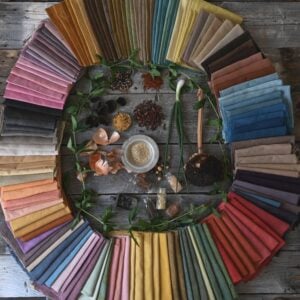I’m obsessed with using tannin and aluminum sulfate to create different color bases for both natural dyes and indigo. What I love about this technique is that this is a great mordant option and it’s a lot of fun to see the colors develop and take on the subtle differences between the different tannin bases. This time, we’re working with a lightweight, pre-mordanted, organic cotton suitable for stitching and quilting. We mordanted 4 fat quarters, each with a different tannin, and then tried a few dye experiments using Marigold Mix, Madder extract and Indigo.
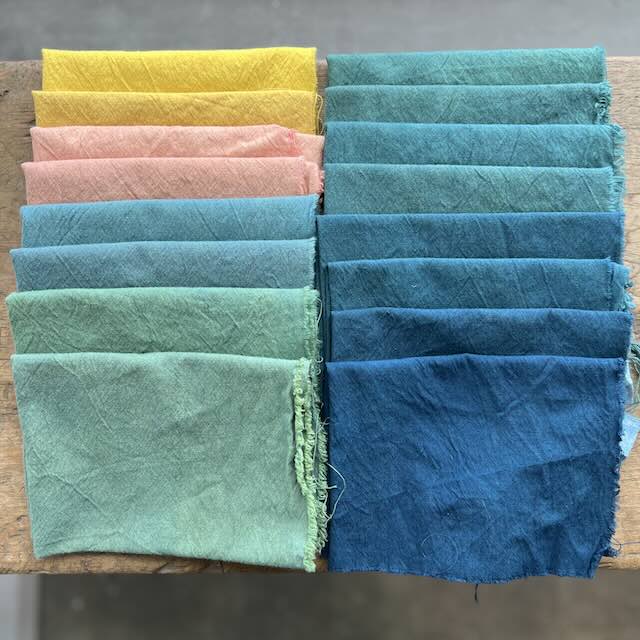
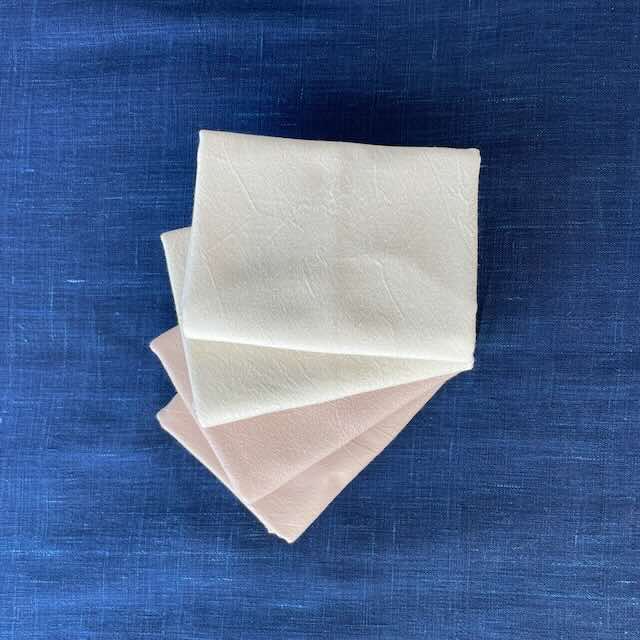
Start with our Mordanted Fat quarter pack, which contains one fat quarter each of gallo-tannin, sumac, cutch and quebracho. For testing purposes, we cut each of the fat quarters into 4 pieces and labeled them, giving us 16 different pieces of fabric. If you want to try and mordant your own fabrics, use our tannin-alum mordant instructions and mordant with Sumac, Quebracho, Gallo Tannin and Cutch as your tannin choices.
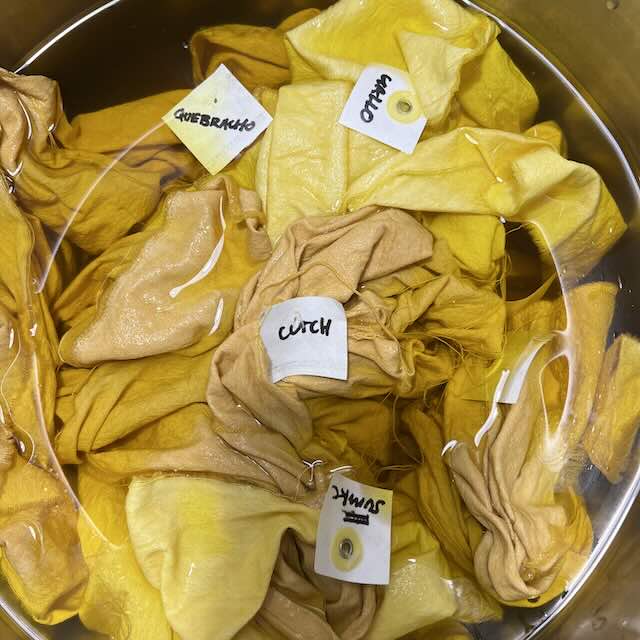
We threw all of our labeled fat quarters into a marigold mix dye bath and let them develop into a bright yellow.
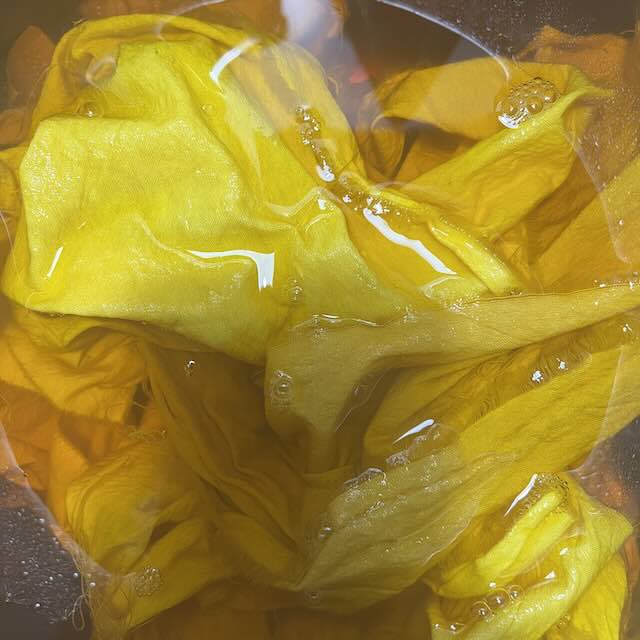
Once all the fat quarters were dyed, we took 2 of the yellow pieces (1 quebracho and 1 sumac) and set them aside. Then we took 2 more yellow pieces (1 cutch and 1 gallo-tannin), and we overdyed them in a light madder bath (0.25% madder extract. The rest of the yellow-dyed squares were reserved for a light and a dark indigo overdye.

The indigo overdye process was that each of the 4 pieces went into a light, medium or dark indigo vat. I was pleased to see how the light vat created soft green and light blue shades, then the medium vat created more saturated teal colors. Finally, the dark indigo vat created stronger blues and blue-greens. With careful examination, you can see the beautiful range and the underlying tannin base. These experiments were easy with the premordanted fabrics and I’m going to work on the next set of colorways soon!

